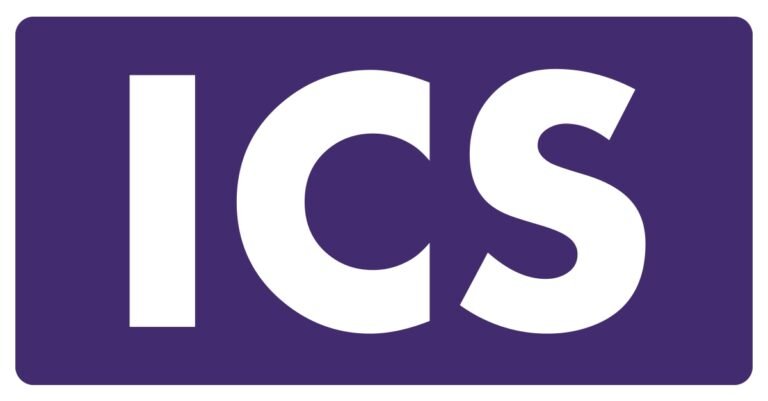Welcome to the realm of Industrial Control Systems (ICS) outsourcing, where the intersection of technology and security is paramount. In this article, we delve into the crucial domain of interview questions tailored for professionals engaged in outsourcing ICS functions. As organizations entrust the management of their critical infrastructure to external partners, navigating the hiring process becomes a strategic imperative. Join us as we explore the key inquiries that illuminate the competency, experience, and adaptability of candidates in safeguarding and optimizing industrial control environments.
20 Frequently Asked ICS Outsourcing Interview Questions
#1. Can you explain the importance of Industrial Control Systems (ICS) in critical infrastructure?
Industrial Control Systems (ICS) form the backbone of critical infrastructure, encompassing sectors such as energy, water supply, manufacturing, and transportation. They play a pivotal role in monitoring and controlling physical processes, ensuring the seamless operation of essential services. ICS systems are instrumental in managing and automating various processes, optimizing efficiency, and reducing human intervention. The importance of ICS lies in its ability to maintain the reliability, availability, and resilience of critical infrastructure, making it a prime target for cyber threats.
#2. What are the key components of a typical ICS architecture?
The architecture of an Industrial Control System typically comprises several essential components. These include Supervisory Control and Data Acquisition (SCADA) systems, Programmable Logic Controllers (PLCs), Human-Machine Interface (HMI) devices, communication networks, and various sensors and actuators. SCADA systems act as the central hub for monitoring and controlling industrial processes, while PLCs execute specific control functions. The HMI facilitates interaction between operators and the system, providing real-time data visualization. Communication networks connect these components, forming a cohesive and interdependent structure.
#3. How do you ensure cybersecurity in an ICS environment, considering its unique challenges?
Cybersecurity in ICS environments is a paramount concern due to the potential impact of breaches on critical infrastructure. Professionals in this field need to implement a multi-layered security approach. This includes network segmentation to limit lateral movement, stringent access controls, encryption of communication channels, and continuous monitoring for anomalies. Regular security audits, penetration testing, and employee training are also critical components of a robust ICS cybersecurity strategy. Balancing security with operational needs is a constant challenge, requiring a nuanced understanding of both IT and OT (Operational Technology) environments.
#4. Describe your experience with different communication protocols commonly used in ICS.
ICS systems rely on various communication protocols to facilitate data exchange between components. Common protocols include Modbus, DNP3, and OPC (OLE for Process Control). A comprehensive understanding of these protocols is essential for ensuring the smooth and secure operation of ICS. Professionals should be adept at configuring and securing communication channels, addressing potential vulnerabilities associated with specific protocols, and troubleshooting communication issues that may arise during system operation.
#5. What measures would you take to protect against common ICS cyber threats like malware or ransomware?
Safeguarding ICS environments requires a proactive stance against a myriad of cyber threats. Professionals must implement measures such as regularly updating and patching software, deploying intrusion detection systems, and employing firewalls to filter malicious traffic. Developing and enforcing strong access controls, including the principle of least privilege, helps mitigate the risk of unauthorized access. Additionally, conducting threat intelligence analysis and staying informed about emerging threats are crucial for adapting security measures to evolving cyber landscapes in the ICS domain.
#6. Explain the role of risk assessment in ICS security. How do you approach it?
Risk assessment is a foundational step in crafting a resilient ICS security strategy. Professionals in this field should possess the skills to identify, analyze, and prioritize potential risks to the ICS environment. This involves assessing vulnerabilities, evaluating the likelihood of threats, and understanding the potential impact of security incidents. By conducting thorough risk assessments, organizations can tailor their security measures to address the most significant threats, ensuring a proactive and targeted approach to ICS security.
#7. Can you elaborate on the concept of “air-gapping” in the context of ICS security?
Air-gapping” is a security measure that physically or logically isolates ICS systems from external networks, particularly the internet. This is done to minimize the risk of cyber threats infiltrating critical infrastructure. Professionals need to understand the nuances of implementing effective air-gapping strategies, considering the operational challenges associated with isolated systems. While air-gapping enhances security, it also introduces complexities in terms of system updates and data exchange, necessitating a careful balance between security and operational requirements.
#8. Discuss the significance of anomaly detection in ICS environments. How would you implement it?
Anomaly detection is crucial for identifying unusual patterns or behaviors in ICS systems that may indicate a security threat. Professionals must be adept at implementing anomaly detection mechanisms that analyze deviations from normal system behavior. This involves leveraging machine learning algorithms, statistical models, and heuristics to detect and respond to anomalies promptly. Effective anomaly detection enhances the ability to identify potential security incidents early, minimizing the impact on critical industrial processes.
#9. How do you handle software updates and patches in a mission-critical ICS system without causing disruptions?
Managing software updates and patches in ICS environments requires a delicate balance between ensuring security and minimizing operational disruptions. Professionals should have a structured approach to assess the impact of updates on system stability, test patches in a controlled environment, and schedule updates during planned maintenance windows to avoid unplanned downtime. This process involves collaboration between IT and OT teams to coordinate efforts and maintain the integrity of critical processes while addressing security vulnerabilities.
#10. What steps would you take in response to a security incident or breach in an ICS environment?
Dealing with security incidents in ICS requires a well-defined and practiced incident response plan. Professionals should be capable of swiftly identifying and containing security breaches, analyzing the root cause, and implementing corrective actions. This involves coordination with various stakeholders, including IT security teams, to ensure a comprehensive and effective response. Additionally, post-incident analysis is crucial for continuous improvement, refining security measures based on lessons learned from each incident.
#11. Describe your experience with compliance standards such as NIST, ISA/IEC 62443, or other relevant frameworks in ICS security.
Demonstrating familiarity with relevant compliance standards is vital for ICS security professionals. Whether it’s NIST, ISA/IEC 62443, or industry-specific regulations, candidates should showcase their expertise in implementing and adhering to these standards. This includes conducting audits, ensuring systems meet regulatory requirements, and staying abreast of updates to compliance frameworks to uphold the highest standards of security in critical infrastructure.
#12. How do you balance the need for remote access in ICS systems with security concerns?
Enabling remote access in ICS systems is often necessary for monitoring and maintenance, but it introduces security challenges. Professionals need to strike a balance between providing remote access for operational efficiency and implementing robust security measures. This includes utilizing secure VPNs, multi-factor authentication, and encryption to safeguard remote connections, mitigating the risks associated with external access points.
#13. Can you provide examples of preventive and detective controls in the context of ICS security?
ICS security relies on a combination of preventive and detective controls. Preventive measures aim to stop security incidents before they occur, such as implementing access controls and firewalls. Detective controls, on the other hand, focus on identifying and responding to incidents in real-time, often through the use of intrusion detection systems and continuous monitoring. Professionals should understand how to implement and balance these controls to create a comprehensive security posture.
#14. Discuss the role of physical security in safeguarding ICS infrastructure.
While cybersecurity is paramount, physical security is equally important in protecting ICS infrastructure. Professionals should assess and implement measures such as restricted access zones, surveillance systems, and environmental controls to safeguard critical components. A holistic approach that integrates both cybersecurity and physical security measures ensures a robust defense against a diverse range of threats.
#15. What are the challenges associated with integrating legacy systems into modern ICS environments?
Many ICS environments still rely on legacy systems, presenting integration challenges. Professionals need to navigate the complexities of connecting older technologies with modern components while maintaining security and functionality. This includes addressing compatibility issues, ensuring data interoperability, and implementing security measures that bridge the gap between legacy and contemporary systems. Successfully managing this integration is essential for optimizing overall ICS performance
#16. Explain the concept of defense-in-depth and how it applies to ICS security.
The concept of defense-in-depth involves deploying multiple layers of security mechanisms to protect ICS environments comprehensively. Professionals should understand the importance of redundancy and diversity in security measures, including firewalls, intrusion detection systems, access controls, and regular security audits. This approach ensures that even if one layer is compromised, others remain intact, creating a robust defense against evolving cyber threats.
#17. How do you stay updated on the latest trends and threats in the field of ICS cybersecurity?
Continuous learning is crucial in the ever-evolving landscape of ICS cybersecurity. Professionals should actively seek information on emerging threats, vulnerabilities, and best practices. Engaging in forums, attending conferences, and participating in industry-specific communities contribute to staying informed. This proactive approach allows professionals to adapt their security strategies to address new challenges and innovations in ICS cybersecurity.
#18. Share your experience with incident response planning specific to ICS environments.
Developing and implementing an effective incident response plan is imperative in ICS security. Professionals should be adept at creating detailed response procedures, defining communication protocols, and conducting regular drills to ensure a swift and coordinated response to security incidents. The goal is to minimize downtime, contain the impact, and learn from each incident to continually improve the overall security posture.
#19. Describe a scenario where you had to optimize the performance of an ICS system. What steps did you take?
Professionals must possess the skills to optimize the performance of ICS systems to ensure efficiency and reliability. This involves fine-tuning configurations, monitoring system health, and addressing bottlenecks that may impact operational effectiveness. Additionally, understanding the specific requirements of the industrial processes and tailoring the ICS accordingly is crucial for maintaining optimal performance without compromising security.
#20. In what ways do you ensure collaboration between IT and OT teams for effective ICS security management?
Bridging the gap between Information Technology (IT) and Operational Technology (OT) teams is essential for effective ICS security. Professionals should facilitate collaboration, ensuring that security measures align with operational goals and constraints. This includes establishing clear communication channels, defining roles and responsibilities, and fostering a shared understanding of the unique challenges posed by ICS environments. A harmonized IT-OT approach enhances the overall security posture of critical infrastructure.
Frequently Asked Questions
ICS plays a crucial role in monitoring and controlling physical processes within critical infrastructure sectors, optimizing efficiency, and ensuring the reliability of essential services.
Securing ICS involves implementing a multi-layered approach, including network segmentation, access controls, encryption, and continuous monitoring. Professionals must navigate the balance between security and operational needs.
Air-gapping involves isolating ICS systems from external networks to enhance security. While effective, it introduces operational complexities, requiring careful consideration of system updates and data exchange.
Managing software updates in ICS requires a structured approach, including impact assessments, testing, and coordinated efforts between IT and OT teams to balance security needs and operational stability.
IT-OT collaboration ensures that security measures align with operational goals, fostering a harmonized approach to address the unique challenges of ICS environments and enhance overall security.
Conclusion
the realm of Industrial Control Systems (ICS) outsourcing and security demands a nuanced understanding of the intricate balance between safeguarding critical infrastructure and ensuring operational efficiency. Professionals navigating this landscape must continually evolve their expertise, embracing a holistic approach that combines cybersecurity measures, risk management, and collaborative efforts between IT and OT teams. As the threat landscape evolves, staying vigilant, proactive, and well-versed in emerging trends remains paramount in fortifying the resilience of ICS environments.
References
- glassdoor.com: ICS interview questions
- indeed.com: ICS outsourcing limited interview questions.
Recommendations
- 15 Frequently Asked Nahco Oral Interview Questions In Nigeria
- 20 Frequently Asked Questions for Waitress Interview
- 30 Frequently Asked Interview Questions For Sales Representative
- 20 Frequently Asked Call Center Agent Interview Questions in Nigeria
- 20 Frequently Asked Collection Officer Interview Questions And Answers





